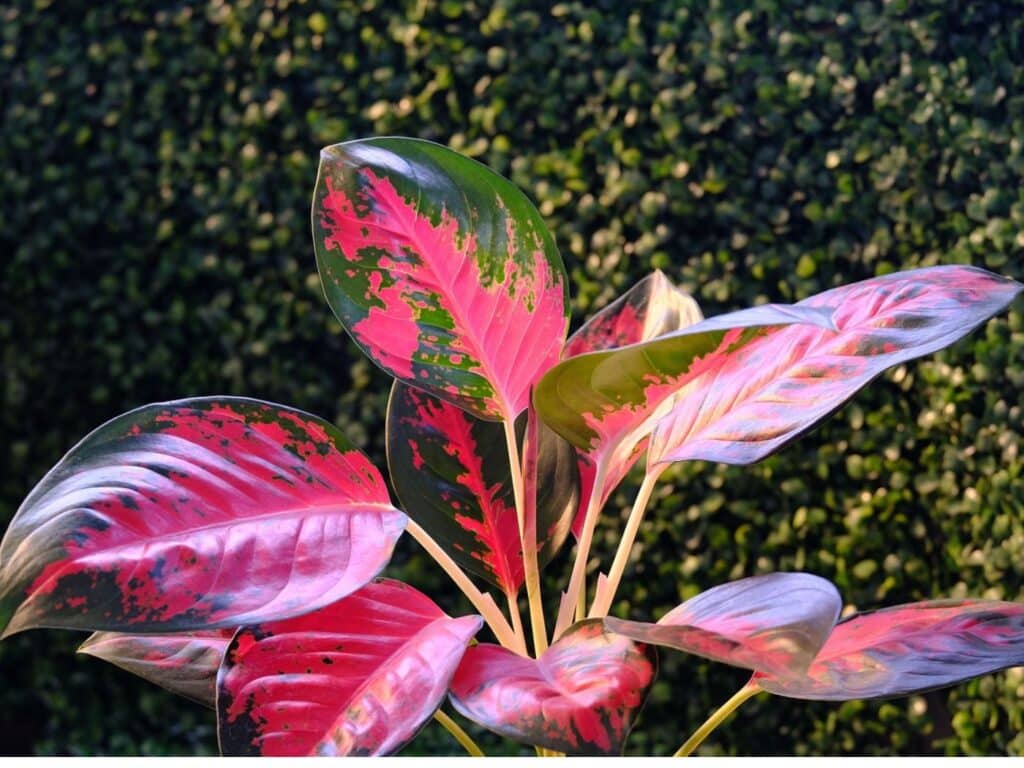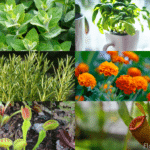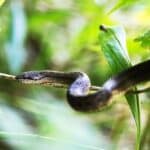As a cat owner, you’re always on the lookout for potential hazards that could harm your beloved pet. One such danger that may well not be on your radar is the Chinese Evergreen—a popular houseplant known for its stunning foliage and air-purifying qualities.
While it’s a beautiful addition to your home decor, it’s crucial to understand that it poses a significant risk to your feline friends. This article delves into the toxic nature of the Chinese Evergreen to cats, shedding light on why it’s harmful and what symptoms to watch for if your cat is exposed.
By staying informed, you can ensure your home remains a safe haven for your pet, blending beauty with pet-friendly living. Let’s explore how to keep your furry companion safe without sacrificing your green thumb.
Understanding the Chinese Evergreen Plant

What Is the Chinese Evergreen?
The Chinese Evergreen, scientifically known as Aglaonema, stands out for its striking, glossy leaves that come in a variety of patterns and colors, from deep green to silver. This plant belongs to the Araceae family, which is renowned for their diverse foliage.
Adaptable to a range of indoor environments, it can thrive with minimal light, making it an excellent choice for less sunny spots in your home.
Why Is It Popular in Homes?
Its popularity in homes isn’t just about its attractive appearance. The Chinese Evergreen is easy to care for, demanding little from its owners besides regular watering and occasional feeding.
It’s a forgiving plant that can bounce back from occasional neglect, making it ideal for both seasoned gardeners and those who may well not have a green thumb. Furthermore, its ability to purify the air by removing toxins adds a practical advantage to its aesthetic appeal, contributing to a healthier living space.
Toxicity of Chinese Evergreen to Cats
How Chinese Evergreen Affects Cats
All types of Chinese Evergreen plants contain calcium oxalate crystals. When your cat nibbles on the leaves or stems, these crystals can penetrate the mouth and throat tissues. This action leads to oral irritation, causing symptoms like drooling and swelling.
Beyond the mouth, if ingested, the plant can irritate the stomach and intestines, potentially causing vomiting. It’s key to remember, the plant’s beauty hides a potential hazard for your furry friend.
Signs of Toxicity in Cats
Signs your cat may well have come into unwanted contact with a Chinese Evergreen include excessive drooling, pawing at the mouth, a decrease in appetite, vomiting, and difficulty swallowing. Some cats may well also exhibit signs of distress, such as increased restlessness or hiding.
If you notice these symptoms, acting quickly is imperative. Contact your vet immediately, as they can offer guidance on mitigating the effects and possibly preventing more serious health issues. Your cat’s curiosity doesn’t have to lead to a vet visit, but it pays to be prepared.
Keeping Your Cat Safe
Alternatives to Chinese Evergreen for Cat Owners
Finding a safe plant alternative may well seem like a puzzle, especially if you’re aiming for the same visual appeal as the Chinese Evergreen. Fear not! Spider plants offer a similar lushness without the risk, and they’re pretty hardy, too. If you lean towards the more decorative side, consider a Boston fern.
These plants not only add a touch of greenery but are also non-toxic to cats, ensuring that your furry friends stay out of harm’s way. Lastly, the parlor palm could be the green addition your home needs, merging aesthetics with pet safety seamlessly.
Measures to Prevent Cat Exposure
To prevent your cat from coming into contact with potentially harmful plants, a few proactive strategies can make all the difference. First off, place plants out of reach. Sounds simple, right? Using hanging planters or high shelves can put your beloved greenery in the safe zone.
Additionally, incorporating cat grass in your home gives your feline friend a safe plant to nibble on, reducing the temptation to chew on others that could be toxic.
Training also plays a crucial role. A firm “no” can deter curiosity, but it requires consistency. Remember, keeping your cat safe doesn’t mean you have to compromise on having plants indoors. It just means choosing and positioning them wisely.
Treatment and First Aid for Chinese Evergreen Poisoning
What to Do if Your Cat Ingests Chinese Evergreen
If your cat chows down on a Chinese Evergreen, keep calm but act swiftly. First, remove any plant material from your cat’s mouth if you can safely do so. Rinse their mouth gently with water to ease irritation and remove any remaining crystals. This immediate action can help reduce discomfort.
Next, closely observe your cat for any signs of distress, and try to estimate how much of the plant they ingested. Gathering this information before you reach out for medical advice can be incredibly helpful.
Promptly call your veterinarian or a pet poison hotline. Time is of the essence, and professional guidance is crucial to manage the situation effectively. Don’t try to induce vomiting or give any medications without veterinary direction. Your vet may well advise specific first-aid steps or ask you to bring your cat in for an examination.
When to Seek Veterinary Care
Seek veterinary care immediately if your cat shows any signs of poisoning, like excessive drooling, vomiting, or difficulty breathing. These symptoms warrant professional attention, even if they seem mild at first. Some effects of toxicity may well not be immediately apparent, so err on the side of caution.
If your cat has a history of kidney or liver issues or if it’s very young, elderly, or has a compromised immune system, don’t wait for symptoms to worsen. These conditions can amplify the effects of toxicity, making quick veterinary care even more critical.
Remember, your priority is your cat’s health and safety. Quick action and professional medical care can make a significant difference in their recovery from Chinese Evergreen exposure.
Raising Awareness About Toxic Plants
Educating Cat Owners on Plant Toxicity
Knowledge is power, especially when it comes to keeping your feline friend safe. Understanding the dangers posed by certain houseplants, including the Chinese Evergreen, can greatly reduce the risk of accidental poisoning.
By identifying symptoms early and knowing when to seek veterinary care, you play a critical role in safeguarding your cat’s health. With plants as common as the Chinese Evergreen, it’s vital to stay informed about which greenery may well be harmful to your pet. Regularly checking reliable resources and updating your plant list accordingly will keep both your home and pet safe.
The Role of Pet-Friendly Plant Labels
Let’s talk about making life easier with pet-friendly plant labels. While shopping for new plants, keeping an eye out for labels that specifically mention “safe for pets” can make a world of difference.
These labels take the guesswork out of selecting decor that won’t harm your furry companions. Furthermore, advocating for clearer labeling on plants can further enhance safety measures in the industry.
As consumers, requesting more detailed information on plant packaging encourages companies to prioritize pet safety. This collective effort will pave the way for a safer environment for our beloved cats to explore.
Frequently Asked Questions
Are Chinese Evergreen plants dangerous to cats?
Yes, Chinese Evergreen plants are toxic to cats. If ingested, they can cause various symptoms, such as vomiting, drooling, and difficulty swallowing, requiring immediate veterinary attention.
What are the symptoms of Chinese Evergreen poisoning in cats?
The symptoms include vomiting, drooling, pawing at the mouth, difficulty swallowing, and a decrease in appetite. If you notice any of these symptoms, consult your veterinarian immediately.
What should I do if my cat is poisoned by a Chinese Evergreen plant?
Immediately remove any plant material from your cat’s mouth, gently rinse their mouth with water, and take your cat to a veterinarian right away. Do not induce vomiting unless instructed by a professional.
Can you provide safe plant alternatives to Chinese Evergreens for cat owners?
Yes, some safe alternatives include Spider Plant, Boston Fern, and Areca Palm. These plants are non-toxic to cats and can safely be kept in homes with pets.
What role do pet-friendly plant labels play in preventing pet poisoning?
Pet-friendly plant labels are crucial in helping pet owners identify which plants are safe to keep around their pets. These labels raise awareness and prevent accidental poisonings by guiding responsible plant selection.
How can cat owners educate themselves on plant toxicity?
Cat owners can educate themselves by researching reputable sources online, consulting with veterinarians, and reading labels carefully when purchasing plants. Awareness and knowledge are key in preventing accidental poisonings.







